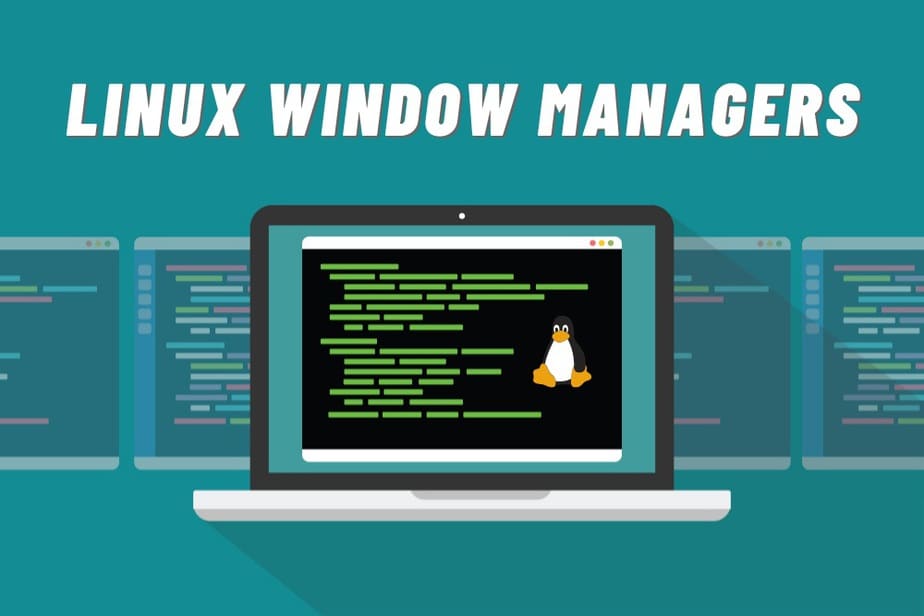Top 13 Best Tiling Window Managers For Linux In 2023

This post will explain Linux Distributions Alternatives. As the name implies, the job of a Linux window manager is to coordinate how programme windows work, and they run in the background of your OS to manage the appearance and placement of running applications.
Top 13 Best Tiling Window Managers For Linux In 2023
In this article, you can know about Linux Distributions Alternatives here are the details below;
There are a variety of Window Manager programmes available for Linux, but as you might anticipate, here is a list of the best tiling window managers to select from.
1. i3
I3 is a free, open-source, and fully customizable windows manager for sophisticated Linux and BSD users and developers. It has a tree data structure that enables for more flexible layouts than its competitors, and it doesn’t require Haskell or LUA to use.
Because of its extensive functionality, such as plain text settings, custom keyboard shortcuts, and configuration without having to restart the underlying system, i3 is one of the most popular manual window tiling management tools. Also check WooCommerce Alternatives
The package i3 is offered by your distribution; simply install it using the package manager as instructed.
- [On CentOS/RHEL] $ sudo yum install i3
- [On Fedora] $ sudo dnf install i3
- [On Debian/Ubuntu] $ sudo apt install i3
2. bspwm
Bspwm is a free, lightweight, & open-source Linux tiling manager that follows the Linux concept of focusing on one task at a time and executing it well.
Its key binding is handled by a separate application, sxhkd, which allows for faster performance and compatibility for additional input devices. It is based on binary space partition, which portrays windows as the leaves of a complete binary tree.
Support for multiple windows, limited support for EWMH, automatic mode for automatically determining the location of app tiles, and configuration and control via messages are among the characteristics of bspwm.
The package bspwm is offered by your distribution; simply install it using the package manager as instructed.
- [On CentOS/RHEL] $ sudo yum install bspwm
- [On Fedora] $ sudo dnf install bspwm
- apt install bspwm $ sudo [On Ubuntu/Debian]
3. Herbstluftwm
Herbstluftwm is a flexible manual tiling window manager for x11 based on Glib and Xlib that is free and open-source. It works on the basis of separating frames into sub-frames, which can then be split further and filled with windows.
Tags (workspaces or virtual desktops), a startup setup script, exactly one tag per monitor, and other features are among herbstluftwm’s highlights. Learn more about herbstluftwm in our article.
The package herbstluftwm is given by your distribution; simply install it using the package manager as instructed.
[On CentOS/RHEL] $ sudo yum install herbstluftwm [On Fedora] $ sudo dnf install herbstluftwm [On Debian/Ubuntu] $ sudo apt install herbstluftwm4. awesome
Awesome is a free & open-source next-generation tiling manager for X that is designed to be fast and adaptable, with a focus on developers, power users, and anyone who wants to have more control over their graphical environment.
It has well-documented source code and API, genuine multi-head support with per-screen desktops, D-Bus support, Lua extensions support, and no floating or tiled layers, among other things.
The package fantastic is offered by your distribution; simply install it using the package manager as shown.
[On CentOS/RHEL] $ sudo yum install amazing [On Fedora] $ sudo dnf install awesome [On Debian/Ubuntu] $ sudo apt install amazing5. Tilix
Tilix is a Gnome Human Interface Guidelines-compliant GTK3 tiling terminal emulator and manager. Users can drag and drop programme windows horizontally and vertically to organise them. Also check SiteGround Alternatives
Working with bespoke headlines and custom hyperlinks, support for transparent background images, background alerts, multiple panes, and permanent layouts are just a few of the services Tilix provides to its customers.
The package Tilix is given by your distribution; simply install it using the package manager as shown.
[On CentOS/RHEL] $ sudo yum install tilix [On Fedora] $ sudo dnf install tilix [On Debian/Ubuntu] $ sudo apt install tilix6. XMonad
XMonad is a dynamic tiling X11 window manager that allows you to automate window finding and alignment. It may be customised with its own extension library, which includes choices for status bars and window decorations. It’s also simple to set up, stable, and minimal.
The package xmonad is offered by your distribution; simply install it using the package manager as shown.
[On CentOS/RHEL] $ sudo yum install xmonad [On Fedora] $ sudo dnf install xmonad [On Debian/Ubuntu] $ sudo apt install xmonad7. Sway
Sway is a tiling Wayland i3-compatible window manager that dynamically arranges app windows to rationally maximise desktop space. It is free, open-source, and lightweight. By default, it arranges windows in a grid and supports practically all of the i3 commands.
Support for keyboard shortcuts, Wayland instead of Xorg, and gaps are among its features. Our piece about Sway can be found here.
Sway can be installed from many systems’ default repositories. Check out this wiki page for installation instructions for your distributions if it isn’t available.
8. tmux
tmux is an open-source terminal multiplexer that allows users to create several terminal sessions that they can control and access from a single screen, making it ideal for running multiple command-line programmes at once.
Tmux makes the most of the available space and is simple to use thanks to keybindings that may be used to divide windows and create extra panes. Individual shell instances can also be shared throughout various sessions and utilised for different purposes by different users.
The package tmux is offered by your distribution; simply install it using the package manager as shown.
[On CentOS/RHEL] $ sudo yum install tmux [On Fedora] $ sudo dnf install tmux [On Debian/Ubuntu] $ sudo apt install tmux9. spectrwm
Spectrwm is a fast, compact, and brief reparenting and tiling window manager for X11 that is inspired by xmonad and dwm. It was created to address the problems that xmonad and dwm have. Also check Fulfillify alternatives
spectrwm has a plain text configuration file, defaults that are identical to xmonad and dwm, and built-in keyboard shortcuts. Other features include colour and border width customization, drag-to-float, quick launch menu customization, adjustable status bar, dynamic RandR compatibility, and more.
The package spectrwm is given by your distribution; simply install it using the package manager as shown.
yum install spectrwm $ sudo [On RHEL/CentOS]
spectrwm $ sudo dnf install [With Fedora]
spectrwm $ sudo apt install [On Ubuntu/Debian]
10. JWM
JWM (Joe’s Window Manager) is a lightweight open-source C-based window manager for the X11 Window System that is designed to run smoothly on older, less powerful computers. It simply needs the Xlib library to run, but it can also use other libraries like libXext for shape extensions, Cairo and libRSVG for icons and backdrops, libjpeg and libpng for JPEG and PNG backgrounds and icons, and so on.
JWM is featured in a few Linux distributions, such as Damn Small Linux and Puppy Linux, and is mostly used on portable computers such as the Raspberry Pi.
yum install jwm $ sudo [On RHEL/CentOS]
dnf install jwm $ sudo [With Fedora]
apt install jwm $ sudo [On Ubuntu/Debian]
11. Qtile
Qtile is a Python-based open-source tiling window manager with many features and configuration options. It is focused on simplicity, extensibility through extensions, and personalization.
Custom layouts, commands, and widgets are simple to create in Qtile. It may also be remotely scripted to create workspaces, update status bar widgets, and manipulate windows, among other things. It comes with extensive documentation in case you have any questions.
Qtile packages are available to install on recent Ubuntu (17.04 or larger), Debian (10 or better), and Fedora versions.
[On Ubuntu/Debian] $ sudo apt-get install qtile [On Fedora] $ sudo dnf -y install qtile12. Ratpoison
Ratpoison is a lightweight Window Manager that is free of elaborate visuals, window decorations, and dependencies on other programmes. It is based on the GNU Screen, which is widely used among virtual terminal users.
The ability to split windows into non-overlapping frames with all windows maximised within their frames is one of Ratpoison’s key features. It is entirely controlled by keyboard commands.
13. dwm
dwm is a lightweight and dynamic tiling window manager for the X Windows operating system that has influenced the creation of other X window managers like as amazing and xmonad.
dwm manages windows in tiled, monocle, and floating layouts, all of which can be dynamically added to improve the environment for the application in use and the work being performed.
There are other tiling managers to select from in the community, but few of them offer nearly as many features as the apps described above.

















